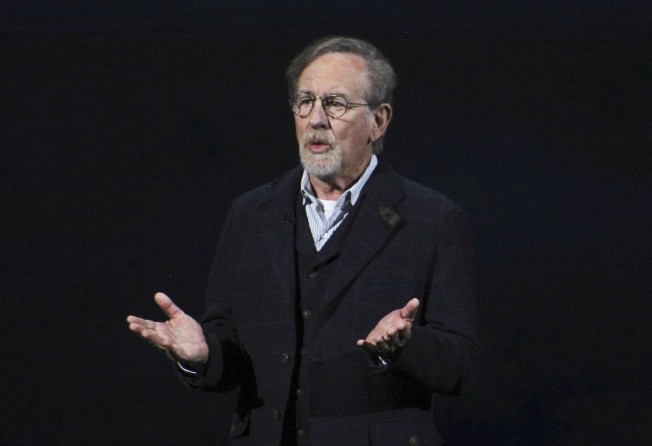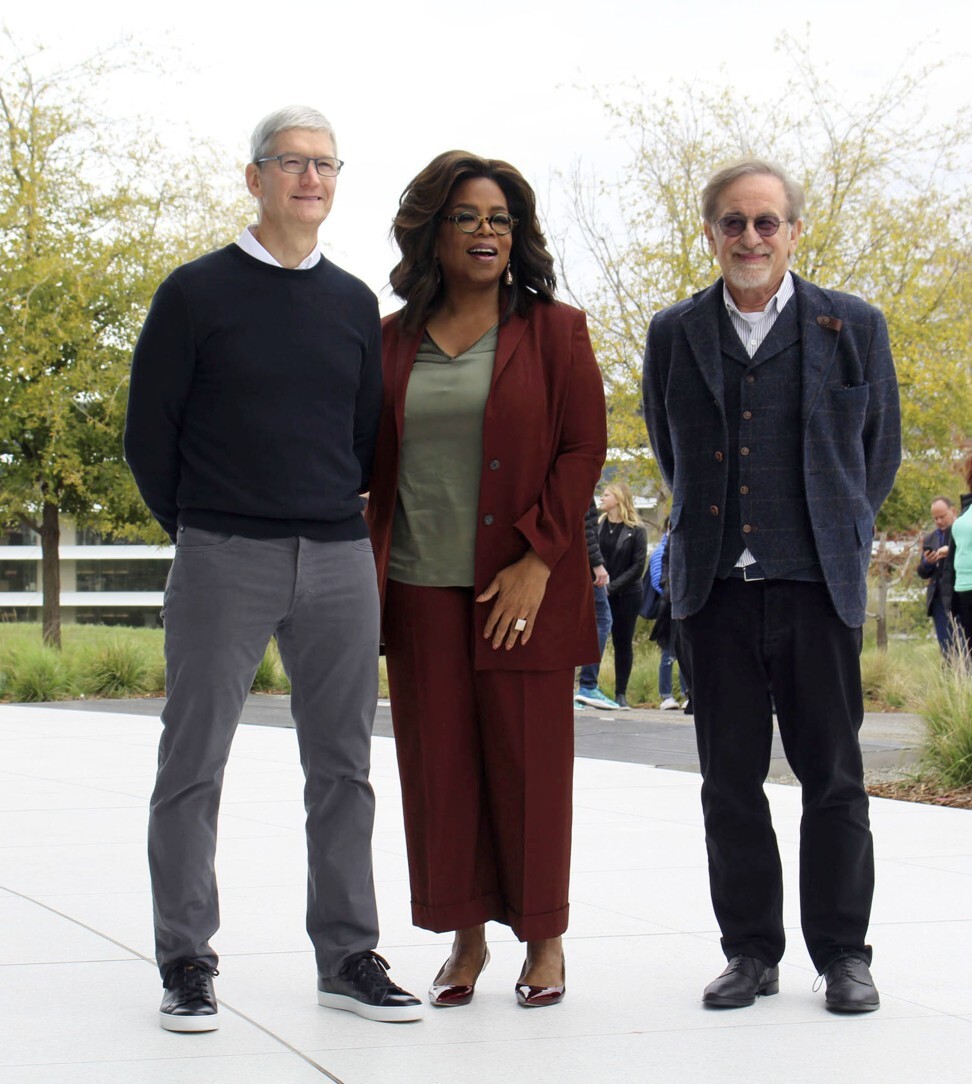
Apple TV+ reveal was missing one huge thing: actual show clips. Why?
- Outside one short “sizzle-reel”, moments from the very things we were hearing such great things about were, in fact, nowhere to be found
- Maybe Apple is stuck in a Silicon Valley mindset of withholding details on new products. But that’s not how Hollywood does it

At a much-hyped media event on Monday, Apple revealed its long-standing plans to become a television power, borrowing several showmanship tricks from the industry it hopes to dominate. But there was one exception – an exception that shows just how Apple is doing things differently, for better and, perhaps, for worse.
As enthusiasm reached new heights, Apple staged the presentation at its Cupertino, California, headquarters. It piled on the undercards, from video games to credit cards to magazines. Then it brought out the heavy hitters.
Steven Spielberg. Sara Bareilles. Kumail Nanjiani. Reese Witherspoon and Jennifer Aniston. J.J. Abrams. Each had plenty to say about their previously reported shows and the service backing them.
“We want to transport the audience with every episode,” Spielberg said of his Amazing Stories revival, praising the “visionary and inventive folks at Apple”. Witherspoon cited the “complicated cultural moment” that her 2019 series, a fictional morning-programme tale called The Morning Show, would help process.

So far, so good. These were right out of Hollywood’s pre-release playbook. Broadcast networks annually hold upfronts for advertisers and media using just this effective formula: bring out a star, have them talk up the show, create a positive association. Say what you will about disruptiveness, but Apple has clearly been paying attention to what’s long worked in Hollywood.
They also took what might be called the Comic-Con approach, in which stars tease but ultimately satisfy the room, feeding a social media frenzy – think Steve Carell stepping out to “surprise” co-stars Witherspoon and Aniston and poking fun at his own masculinity.
There’s a reason, of course, why Hollywood performs these tricks: they basically work. The pre-release material whips up the interest among early adopters (and Instagramers). And that helps the traditional marketing go down easier with a broader audience later.
But something was off here. Missing, even.
It started to bubble up with the first few presenters. It reached a boil when Abrams and Bareilles, promoting music-themed Little Voices, ended with Bareilles sitting down at the piano. By the time Apple brought out production partner Oprah Winfrey, it was clear what the presentation lacked.
Actual clips of the shows.
Yes, moments from the very things we were hearing were so great were, in fact, nowhere to be found.
Apple’s TV presentation, in which it sought to establish itself as a strong competitor to Netflix and HBO, ran upwards of half an hour. Yet outside one short “sizzle-reel” – a quick-cut, information-light montage – it contained nothing from the shows themselves.
“If they don’t show me trailers I will refuse to believe these exist,” wrote the USA Today television critic Kelly Lawler, echoing a common sentiment.
Maybe none of the clips were ready? Except ‘The Morning Show’ began shooting six months ago. That means it had many episodes to choose from
This was a major deviation from what Hollywood does at these events. And it could undermine what Apple is trying to accomplish.
There’s a reason these clips are important. Without anything for fans to focus on, the promises at these gatherings seem like empty hype. The first rule of Hollywood promotion is “give them juicy new announcements.” The second rule is, “if you can’t follow the first rule, at least show the material from what you’ve previously announced.” Apple did neither.
That all this was coming after months of news reports with no actual series to show for it didn’t help. Neither did the company offering few business details – nothing about pricing or options for its bundle.
You could, of course, lament the overabundance of pre-release marketing materials – you wouldn’t be alone. But it is a proven strategy. And Apple chose to flout it.

The company could argue that less is more when it comes to promotion. But this would be a misapprehension of how the Hollywood marketing game works in 2019. Less is almost never more. If anything, you want to get as many eyeballs on what you’re peddling, or at least on a shiny, curated, campaign-friendly version of it. Teasers promote trailers; trailers beget other trailers.
Maybe none of the clips were ready? Except The Morning Show began shooting six months ago. That means it had many episodes to choose from. Network upfronts show more from less.
More likely, Apple had a different idea. A Silicon Valley idea, of withholding details on new products, for reasons of competition, or buzz, or both. But it isn’t a Hollywood idea.
Whether Apple will change its marketing tune remains to be seen. Ditto whether consumers will come around on programming and subscriptions at launch. But Apple spent much of Monday hiding the rabbit without ever pulling it out of the hat. And it’s hard to sell an entertainment product these days without a magic trick.